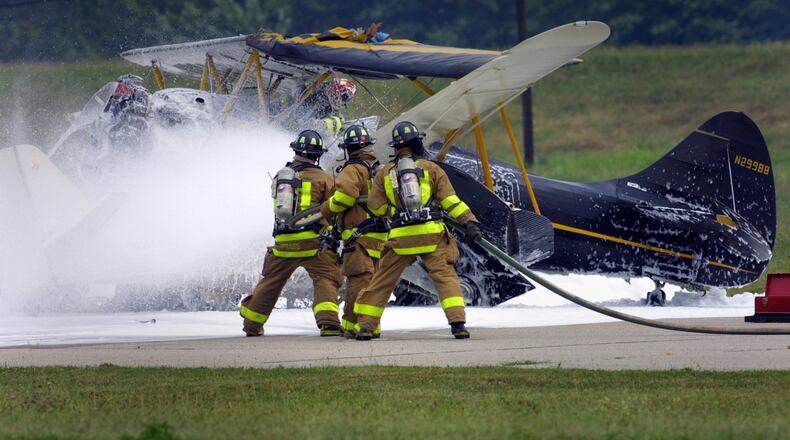John Reeder, Environmental Working Group (EWG) vice president for federal affairs, said more than 400 military installations have confirmed the presence of PFAS in ground water.
“Cleanups of DOD installations are falling behind,” Reeder said in a press briefing Monday, adding later: “The problem demands urgency.”
Per- and polyfluoroalkyl substances, also called “PFAS” chemicals, have been found to lead to adverse health effects. In March this year, the U.S. Environmental Protection Agency proposed the first national drinking water standard for the chemicals, sometimes called “forever chemicals” due to their staying power in the environment.
On military bases, the chemicals some times originated in firefighting foams. In March, the Air Force said it had shut down aqueous fire fighting foam or “AFFF” fire suppression systems at 1,038 facilities out of 1,095 that used the foam. Similar fire suppression systems were locked out at Wright-Patterson as of March 1, a spokeswoman for the 88th Air Base Wing said.
For fiscal 2023, the Pentagon requested $1.4 billion for cleanups, and Congress budgeted $2.2 billion, the EWG said. For its fiscal 2024 budget, he DOD requested $1.5 billion, $700 million less than last year’s funding amount.
Jerad Hayes, EWG senior policy analyst, said the clean-up work will become “substantially difficult” without a boost in funding.
“Current clean-up funding cannot possibly catch up to rising clean-up obligations,” Hayes said.
The EWG contends that the Pentagon has “low-balled” budget requests to Congress, arguing that the DOD has asked for less clean-up funding in recent years than it received in 2016.
As a result, some contaminated sites might not get cleaned up for more than 50 years, the group contends.
Hayes said the DOD is in the early stages of its process to address the chemicals. Overall, no PFAS site has completely gone through the clean-up process, the group says.
The Air Force has invited the public to comment on a plan to address the chemicals at former firefighting training areas on Wright-Patterson.
The use of PFAS chemicals at Wright-Patterson and other Air Force bases has been in the public eye for years, and the base’s use of such substances is the subject of a city of Dayton lawsuit against Wright-Patterson and the Air Force.
The base seeks public comments on a proposed “engineering evaluation/cost analysis” of a “non-time critical removal action” on the base. Public comments are due May 20.
In an April 2023 report, the Government Accountability Office found that the “DOD faces significant future costs to address its PFAS releases,” with the department’s most recent estimate totaling at least $6.6 billion beyond fiscal year 2023.
The GAO also said in 2022 that the DOD estimated needing billions to address contamination resulting from its activities at Base Realignment and Closure (BRAC) installations and closed bases.
Questions about the report were sent to Department of the Air Force representatives Monday.
About the Author

